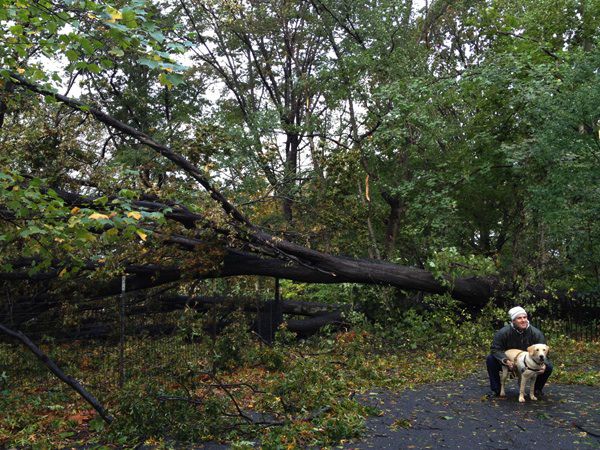
Yesterday’s hurricane hit New York City with wind gusts approaching 80 miles per hour, constant rains and severe flooding affecting all five boroughs of New York. The city is currently going through the steps to clean up after the catastrophe – one step at a time – to return the city to a functioning state. In the words of Mayor Michael Bloomberg, “We expected an unprecedented impact in the city, and that’s what we got.”
POWER OUTAGES
Many suburbs of New York City and areas within the New York City limits are currently without power. Currently, Consolidated Edison Co, which supplies power to more than 9 million people in and around the city, reports over 600,000 customers without power – with nearly a quarter a million of them in lower Manhattan alone. While some of these outages are from downed power lines, an explosion at a substation at east 14th street was the cause for the majority of the outages in Manhattan. As of now, there is no identified timeline as to when electricity would be returned to these customers, but ConEd did report power outages caused by downed lines will take the longest to repair.
TRANSPORTATION
In preparation of the storm, New York City’s MTA closed all subways and bus routes in order to keep their employees, passengers and the subway system safe. Early Tuesday morning, seven tunnels under the East River were reported to have been flooded, and it was stated that this is the worst damage the system has seen in its 108 years of operation. In a press conference Tuesday morning, Mayor Bloomberg suggested that it would be four to five days before the subways are completely operational.
Many of the bridges and tunnels were also closed to avoid damage from flooding and high winds. As of 11 AM Tuesday, the Brooklyn, Manhattan and Williamsburg Bridges had reopened for traffic. At last, there is a way to get out of Manhattan – and into Manhattan for those who are headed to work today.
Many tunnels remain closed; The Brooklyn-Battery Tunnel is completely flooded out, and the Queens Midtown and Holland Tunnels remain closed. Expect the majority of the tunnels and other bridges to remain closed or under restriction until the winds have completely died down and water levels have receded.
Most flights in or out of New York City have been cancelled, and all three airports remain a ghost land. While everyone is hoping that flights will resume soon, many travelers are trying to catch flights out of Philadelphia, Washington and Boston.
CLOSURES
The transportation, flooding and power supply issues have left no option but for much of the city to shut down. New York City Public Schools have been shut down and will remain closed through Wednesday and Superstorm Sandy forced the New York Stock Exchange to close its doors for two days – the first time this has happened for weather since 1888.
Most offices in Manhattan have shut down for the day, and many have plans on remaining that way until the subways and other modes of transportation are up and running. To be safe, we would recommend you call any establishment you are planning on visiting to ensure they are opening and business is working as usual. That being said, Mayor Bloomberg encourages everyone who is able to come into work to show up – the city needs its workers to help, and you are seeing people taking cabs or walking to work.
FLOODING
The worst of the flooding occurred along any coastal regions of the city, including Staten Island, Long Island, Queens and Brooklyn. Any areas near the rivers saw significant flooding as the storm surge – 13 feet – brought the water levels to record highs. Apart from the many tunnels completely submerged, there was significant flooding in the streets of lower Manhattan as well as numerous homes flooded in all other boroughs.
The flooding also may have caused a number of fires in Queens, one of which engulfing 80 homes in Breezy Point. 200 firefighters responded and had to use boats to rescue 25-trapped people, according to fire officials.
NEXT STEPS
What are the next steps for New York? Be patient. Transportation is not going to be reliable for the remainder of the week. Workers are already going through the process of pumping out water and inspecting the hundreds of miles of track.
If you do not have power, it is likely that you will not have power for a few days, especially if a downed power line caused you to lose your electricity. Remember that there are a number of shelters set up around the city if you need assistance – and 311 is the number to call in a non-emergency situation.

